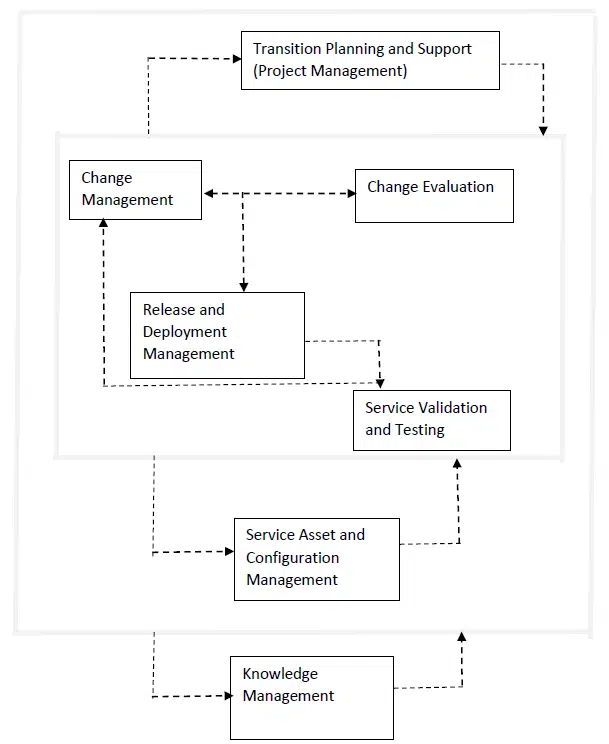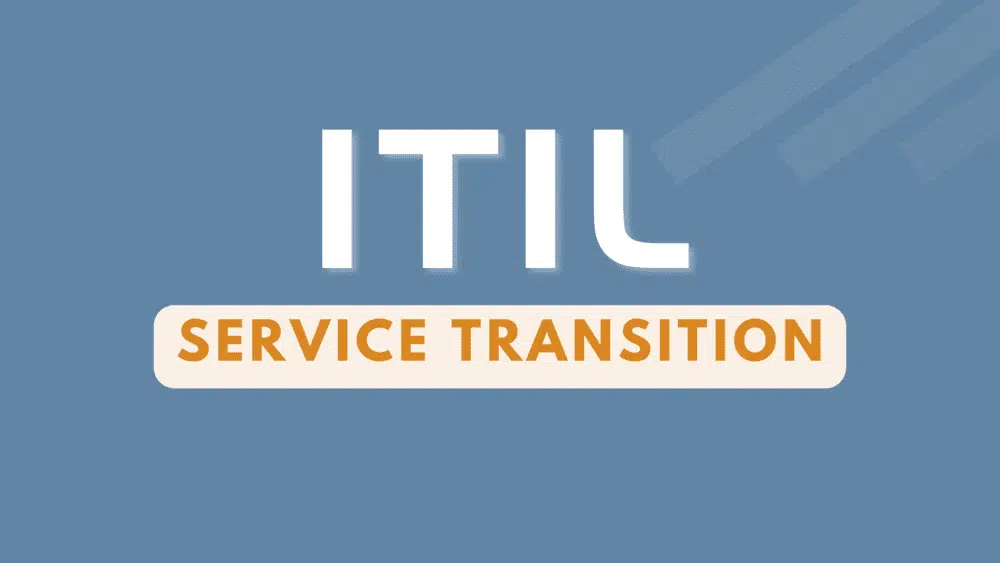The ITIL Service Transition stage is crucial for efficiently introducing new service designs and changes into operations. Its primary objective is to ensure that these modifications meet the expectations of the business.
This phase of the ITIL service lifecycle focuses on building and deploying IT services in line with designs, allowing for flexibility in case of modifications, failures, and other unforeseen circumstances during service deployment.
The ITIL service lifecycle comprises five stages, with the Service Transition stage being the third. These stages are as follows:
- ITIL Service Strategy
- ITIL Service Design (Design Strategy)
- ITIL Service Transition (Transition Strategy)
- ITIL Service Operation (Operation Strategy)
- ITIL Continual Service Improvement
In this blog post, we will delve into the details of the ITIL Service Transition stage.
ITIL Service Transition
The ITIL Service Transition stage is a critical phase that ensures all changes to services and service management processes are coordinated effectively. By leveraging the Service Knowledge Management System (SKMS) to ensure the smooth operation of services, the ITIL Service Transition stage determines the overall success of the service life cycle.
This stage is responsible for leveraging new and existing services to deliver high-impact results and increase the organizational knowledge base. By carefully managing the transition of services into operation, the ITIL Service Transition stage helps to ensure that service delivery is consistent, efficient, and meets the needs of the business.
The Objective and Scope of Service Transition
The objectives and scope of ITIL Service Transition can be defined as follows:
- Efficiently and effectively planning and managing service changes
- Managing the risks associated with newly introduced, modified, or discontinued services
- Deploying service releases into various environments
- Setting performance expectations and usage requirements for new or changed services
- Ensuring that service changes provide expected value to the business
- Providing knowledge and information about services and service assets
The ITIL Service Transition stage involves several major activities, including release planning, development, analysis, and implementation of capabilities for transitioning new and changed services into an environment that is sufficiently supported. Additionally, the stage takes into account service retirement and service transfers between service providers.
By carefully managing these activities, the ITIL Service Transition stage helps to ensure that service delivery is consistent, efficient, and meets the needs of the business.
ITIL Service Transition Processes and Importance
The successful transition of an IT service is critical for meeting the needs of end-users. In the ITIL Service Transition process, the following key tasks are essential for effective transition planning and support:
- Define the Strategy: This involves outlining the transition strategy, including roles, procedures, responsibilities, frameworks, success criteria, and standards.
- Evaluate the Service Transition: This process includes preparing, assessing, and modifying the service transition to ensure that the changes are accurate and feasible.
- Discuss the Transition: The service transition should be coordinated before release, including planning, reviewing, and incorporating the transition before client distribution.
- Provide Support for the Transition: This procedure ensures that the transition process’s management, assessment, progress, and its application receive full support.
The processes in the service transition knowledge management areas are as follows:
- Change Management: This is essential to control the lifecycle of changes and allow beneficial changes with minimum disruption to IT services.
- Change Evaluation: This process assesses major changes, such as introducing a new service or a substantial change to an existing service, before those changes can proceed to the next phase in their lifecycle.
- Project Management (Transition Planning and Support): This is important to plan and coordinate the resources needed to deploy a major release while considering cost, time, and quality constraints.
- Knowledge Management: This process ensures that the right knowledge is available to the right person at the right time for efficient and quality service delivery.
- Release and Deployment Management: This process plans, schedules, and controls the movement of releases to test and live environments to ensure the integrity of the live environment is protected and the correct components are released.
- Service Validation and Testing: This process ensures that deployed releases and resulting services meet customer expectations and verifies that IT operations can support the new service. Objectivity is critical here, as evidence must show that the new service or change can support the business requirements, including the agreed SLAs.
- Service Asset and Configuration Management (SACM): This process maintains information about configuration items required to deliver an IT service, including their relationships.
The flowchart for the above processes is given below:

The ITIL Service Transition process involves an interchange between change management and change evaluation, with feedback from release and deployment management. Remember that the goal is to address changes that meet business requirements in transition planning.
Knowledge management is critical in supporting all aspects of the service transition process. On the other hand, service asset and configuration management feed only ITIL Service Transition to improve estimates of costs, service timing, required resources, and the risk involved in implementation. This can reduce delays due to unexpected clashes and dependencies.
Effective service transition increases confidence that a new or modified service will provide value without unexpected changes. It ensures that the newly introduced or modified services are easy to maintain and cost-effective in the long run. A well-designed service transition strategy can also offer improved control over the existing service assets and configurations.
Conclusion
ITIL Service Transition plays a crucial role in ensuring that changes to IT services are implemented according to a common framework and standard processes. At the same time, package releases are executed as planned. This approach provides quality assurance for newly introduced or modified services while improving quality during the transition.
Strict adherence to the processes and knowledge management areas allows service providers to handle challenges effectively and manage risks associated with the transition. By implementing a comprehensive service transition strategy, organizations can ensure that their services meet business requirements and are delivered efficiently and effectively.

I am Mohammad Fahad Usmani, B.E. PMP, PMI-RMP. I have been blogging on project management topics since 2011. To date, thousands of professionals have passed the PMP exam using my resources.







